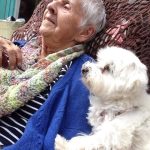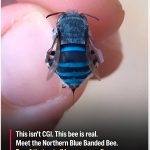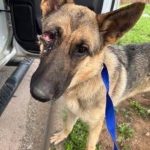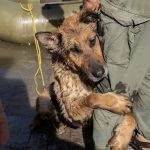We don’t do domestics — but this one found a way into our hearts.
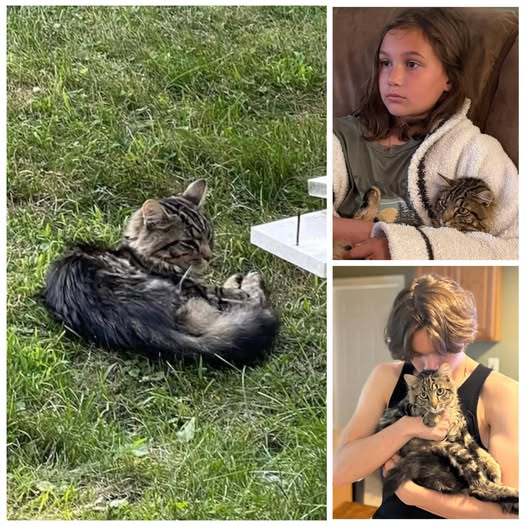
We don’t do domestics — but this one found a way into our hearts.
Let me be perfectly clear — our rescue doesn’t do domestics. We are a wildlife rescue. Licensed, trained, structured, and purpose-built to help wild animals in distress. Birds, raccoons, deer, foxes, opossums, owls, hawks — you name it. If it’s wild, we’re equipped. We have protocols. We have field kits. We have specialists. That’s what we’re built for. That’s what we do.
And yet… every now and then, life throws a situation at you that completely ignores your rules. Some creatures don’t fit the categories. They show up outside your boundaries, broken and begging for help in a way that’s impossible to ignore. And then you’re left with a choice: turn away because it’s not your job, or stay because it’s simply the right thing to do.

It all started last weekend — a Saturday, quiet and cool, with no intention of adventure. Like most stories that reshape your heart, it began with a message. Then another. Then a few more. Different people, all saying the same thing: “There’s a cat in someone’s yard. It can’t walk. It’s been laying there for hours. No one knows what to do. Can you help?”
At first, I ignored it. Not to be cruel — just honest. This wasn’t our type of call. We don’t have cat traps. We don’t stock flea meds or kitten formula. We don’t house animals that need litter boxes and dry kibble. We run on grants and limited manpower as it is. And cats? They’re not our wheelhouse.
But the messages kept coming. And the location — as fate would have it — was right in my hometown, barely 10 minutes away. The local animal shelter was closed for the weekend. Animal control? Also off duty. No one was answering. No one was showing up. So I sighed, grabbed a crate, a thick towel, and a pair of gloves — just in case — and headed out. I told myself I was just going to check. That’s it. Just check.

When I got there, I saw him immediately. Laying motionless under a patch of shade near the corner of a front lawn. His fur was thin and patchy, covered in dust. When I stepped closer, he tried to move — awkwardly, painfully. He made a stumbling attempt to stand, but his front leg buckled beneath him. He collapsed back to the ground with a soft grunt. That’s when I saw just how gaunt he really was. Every rib pressed visibly against his skin. His spine stuck out like a jagged ridge. His fur was matted in places and bare in others. He looked like a creature halfway between this world and the next.
Despite all this, his eyes still met mine. He didn’t hiss. He didn’t growl. He didn’t beg. He simply watched. As if he was waiting to see if I, too, would walk away.
I crouched down slowly, murmured something I can’t even remember, and gently tossed the towel over him. He didn’t resist. Not a single scratch or yowl. He let me wrap him, lift him, and place him in the crate with no fight. Just a deep, resigned breath — the kind of sound an animal makes when it realizes that survival is no longer in its own hands.

Back at the rescue, we cleared a temporary space and called our vet partner. He was examined, rehydrated, tested. No chip. No collar. No neuter scar. No recent reports matching his description. He was an unowned, unclaimed, unprotected male, and he had likely been like that for a very long time. The front leg injury was old — a fracture that had healed badly. He had likely been dragging it around for months.
We named him Dusty. It seemed to fit — a soft, quiet name for a soft, quiet soul.
That first night, we placed him in one of our backup incubators — typically reserved for fragile birds or orphaned mammals — so he could stay warm. He was cold to the touch and barely responsive. We offered a little bit of food, then let him sleep. And sleep he did — curled into a tiny crescent shape, barely taking up half the pad.
By morning, something shifted. His eyes were clearer. His ears perked slightly. He licked the broth from a syringe tip with weak but deliberate movements. The vet said he had a shot — if we could keep him comfortable, nourished, and emotionally supported, he might actually bounce back.

And that was the moment I made a mistake — the kind of mistake that doesn’t show up in training manuals or policy binders. I took him out of the incubator and brought him home.
Not because I had a plan. Not because I’d suddenly decided to rescue domestics. But because I knew that if we left him there too long, my wildlife team — tough and professional as they are — would fall in love. I was trying to protect them. So, I brought him into my house, intending it to be short-term. Just a few nights.
He met my children that evening. My daughter sat on the floor beside his crate and read to him. My son brought over his stuffed animals and gently lined them up at the entrance, like a welcoming committee. Dusty didn’t run or hide. He simply watched. Quiet, still, and slowly, like a plant leaning toward light, he began to respond.
That night, he curled up on my son’s blanket. The next morning, he meowed — just once — when my daughter turned on her cartoons. And that evening, he licked her cheek as she fell asleep beside him on the rug.

Suddenly, this was no longer a temporary arrangement.
Dusty had not just survived. He had begun to belong.
And it hit me: this wasn’t just a rescue. It was a reunion. Somehow, this cat who had spent months alone and ignored had found the one place where he wasn’t just a case. He was part of a home.
We got him neutered, cleaned, dewormed. He gained weight steadily. His coat thickened. His limp remained, but it no longer slowed him down. He began to chase paper balls. He explored window sills. He dozed in sunbeams like he’d invented the concept.
And I, the person who adamantly declared “we don’t do domestics,” now had a permanent reminder in my living room that compassion doesn’t always stick to categories.

We’ve added a note to our protocols: “In rare exceptions, evaluate on a case-by-case basis — especially when the creature in question has cartoon preferences and a habit of stealing the children’s hearts.”
Dusty watches Bluey. He steals socks. He curls into laps. He chirps when I walk through the door. He is, by every definition, a domestic.
And still, perhaps more than most wild animals I’ve encountered, he’s a survivor. He’s a story. He’s a reminder that rescue is not a field of checkboxes — it’s a matter of presence, of being in the right place at the right time, and of saying yes even when your paperwork says no.
So yes, we’re a wildlife rescue. We don’t do cats.
Except this one.
And maybe… the next one too.
